Shrimp Étouffée
Shrimp Étouffée takes just a little effort but is will worth it! The reward is a smooth and creamy broth and that is thick and rich.

We were foodies before the word foodie was even invented. I’m sure there are other people that can say that but it’s true. In my chicken with walnuts post, I reminisced about how we used to make homemade Asian food from scratch. And quite often!
We also made somewhat authentic Mexican food. My sister sent me the cookbook with the tamale recipe in it Dad used to make. I love me some tamales. But I’m sure I’ve talked about that before. I cannot wait to get some masa and make those suckers. So so good.

Well, Cajun and Creole food is no exception.
Dad travelled to New Orleans quite often. And he would always find something food related to bring back. A recipe, a spice mix, or an ingredient always came home with him from those trips. We had blackened spices before most even knew what it was. Speaking of which, I need to make another batch of that.
We had andouille and gumbo file powder. Dirty rice, jambalaya, and red beans and rice were something we had often growing up. Along with blackened almost everything from steaks to shrimp and fish. Heck, we even took blackened seasoning on the road with us on vacation! I remember having blackened blue fish during on Florida trip. Because we always went to Florida for vacations.
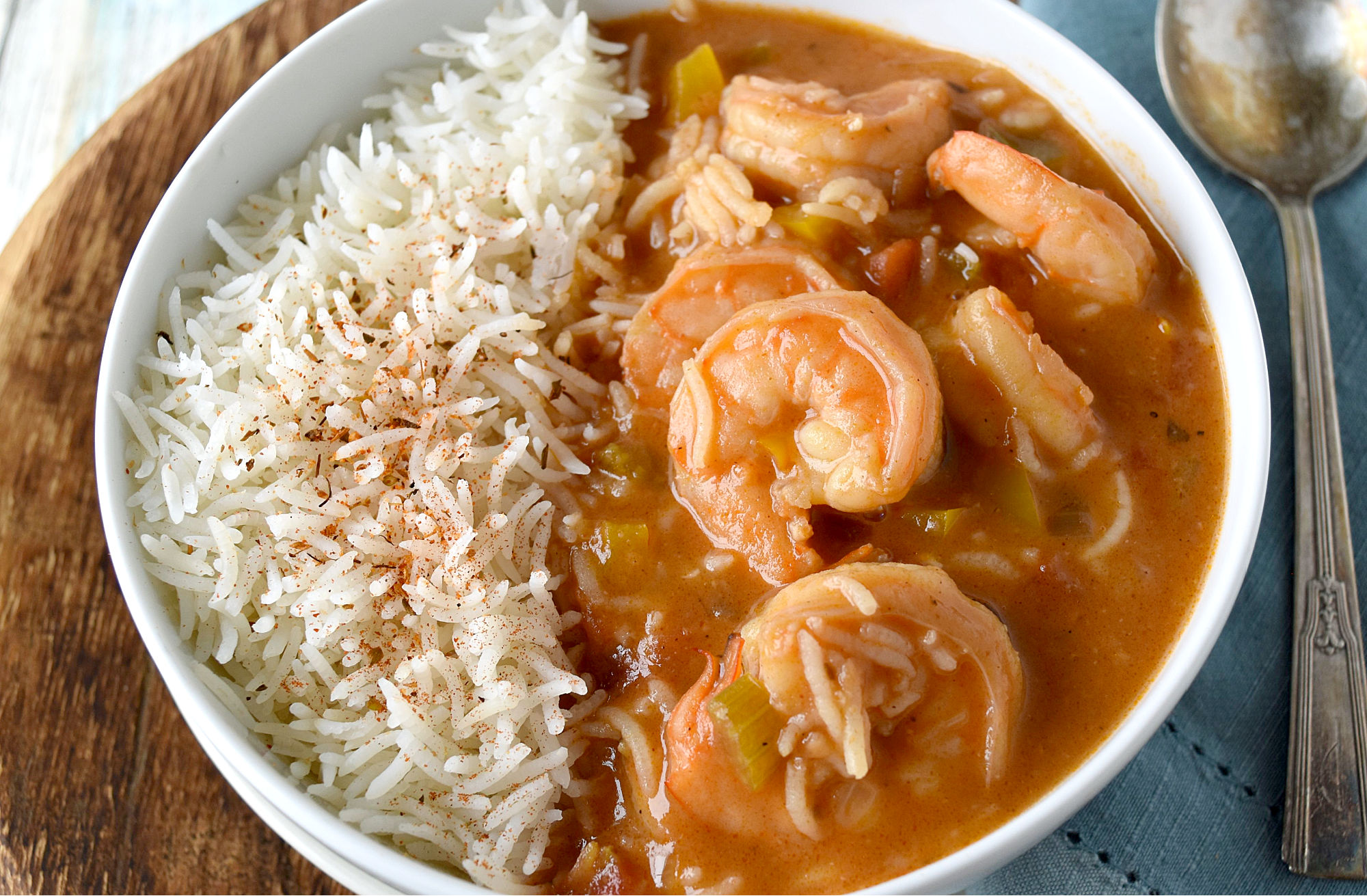
What is Creole food?
Creole food is a true mix of multiple types of cuisines. Initial settlers to Louisiana were the French and the Spanish. Their descendants of this “New World” called themselves Creole. While initially it was predominantly French and Spanish cuisines, eventually African slaves added their flair to the recipes. Finally, there’s the indigenous people of the area. So, Creole is French, Spanish, African, and Native American. Quite a melting pot with interesting flavors.
Due to their proximity to water this area became prosperous. It was along key trade routes meaning it had a flowing economy and access to exotic ingredients from the Caribbean, Africa, and Europe. These flavors and this wealth shaped the Creole cuisine. It favored more the French styles with the different types of roux, extensive cooking techniques, and use of expensive dairy.
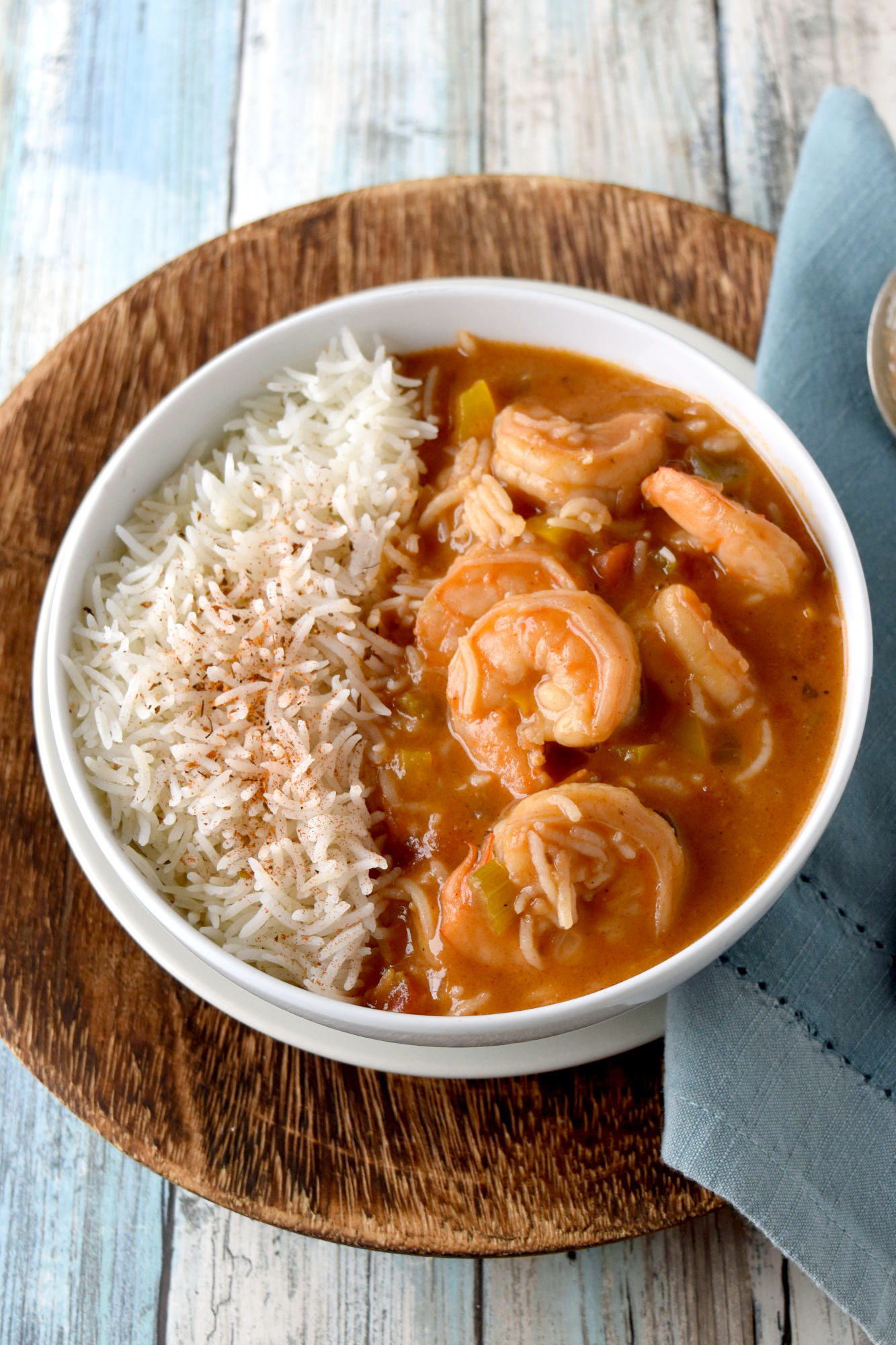
What is Cajun food?
Cajun food is more in line with the exile of Acadians from Canada. The Acadians were the descendants of 17th and 18th century French settlers to North America. Six wars took place and it was the last of these wars, the French and Indian War, that which resulted in these descendants from being forced to leave their home and travel south. It was the second wave of these Acadians that were expelled from Canada to the States, in particular “Spanish” Louisiana. This is where Acadians became Cajuns. If you speak French you can easily see the transition between the names.
How did they end up in Louisiana?
Well, many Acadians went to many different places. Some went to the Caribbean, France, and British Colonies along the North American coast. Many weren’t happy where they were deposited and moved on. But many stayed in the Louisiana area because it afforded them a similar lifestyle they were used to in their homeland: trapping, hunting, and fishing. And some even moved more inland and raised cattle and rice.

Cajun cuisine is mainly cooked with what is on hand. Their roux is made mainly with lard or oil. They did not have access to butter. It was a luxury. Cajun food is made from ingredients foraged from the land or sea. It is a rustic meal that involves one pot and lots of time braising. Authentic Cajun has one pot for the meat, one pot for veggies, and one pot for rice. Sounds delicious to me!
What’s in Shrimp Étouffée anyway?
Étouffée roughly means smothered. To the Cajuns, it’s a dish that has meat of some description simmered in broth with some vegetables (Holy Trinity) and served over rice. Yes, that is a pretty basic translation of the meaning. To be more specific, Cajun Étouffée is typically shellfish cooked in broth served over rice.

The hardest part of Shrimp Étouffée is the roux.
It takes some time and babysitting. It’s the base that will carry all the flavors in this simple Shrimp Étouffée. Actually, it’s the base that carries many traditional Cajun dishes. While the roux is not a Cajun invention, it was carried with the French. They brought it from France to Canada and then to Louisiana after exile.
There are different levels of roux. There’s the lighter roux or white roux. White roux is mainly used to thicken sauces and gravies. It adds little to no flavor. Then there’s the blonde roux which is a little darker in color. It adds a little nutty flavor to the sauce or broth it is cooked with. Finally, there’s brown roux. It’s typically used for gumbo but it’s rich flavor is great in other soups and stews. Just a heads up on this one, it doesn’t thicken as much as the other two.
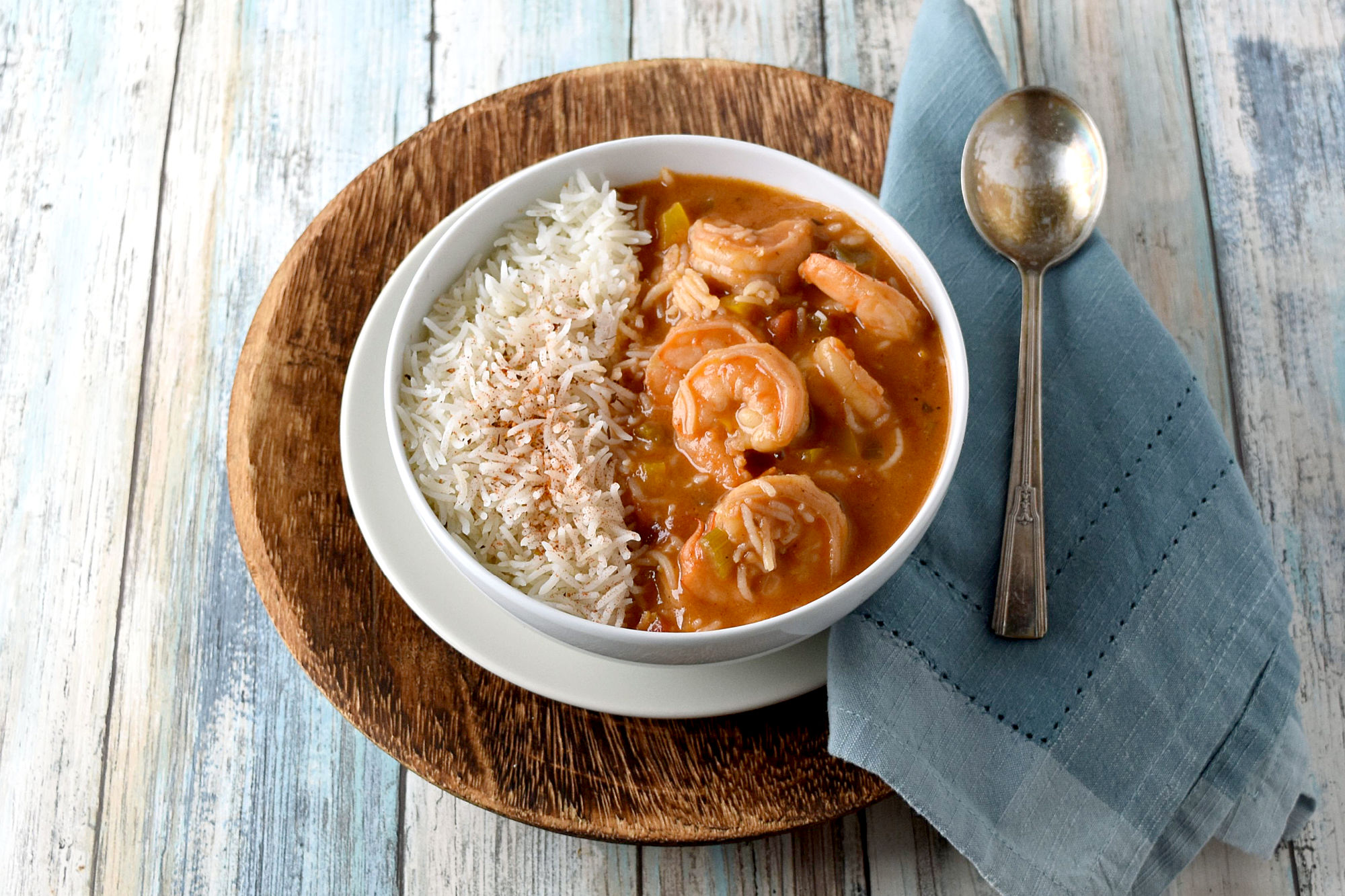
This is a Creole Shrimp Étouffée due to the butter and tomatoes in the étouffée. Cajun food doesn’t typically have tomatoes and, as previously noted, they didn’t have butter. Actually, tomatoes were also an ingredient not readily available. They cost quite a pretty penny back in the day. So, if you want to make Cajun Shrimp Étouffée then make your roux with oil or lard and omit the tomatoes. Shrimp étouffée without tomatoes is Cajun and shrimp étouffée with tomatoes is Creole. Simple as that.
Just as a side note and interesting fact. Tomatoes used to be feared and thought to be poisonous. Not kidding! It’s true! Look it up! It wasn’t the tomato itself, obviously, because we eat them all the time. The combination of pewter plates and the tomato made for a toxic combination. Pewter plates had lead in them. The acid of the tomato leached lead out of the pewter. That is what made people sick, lead poisoning.
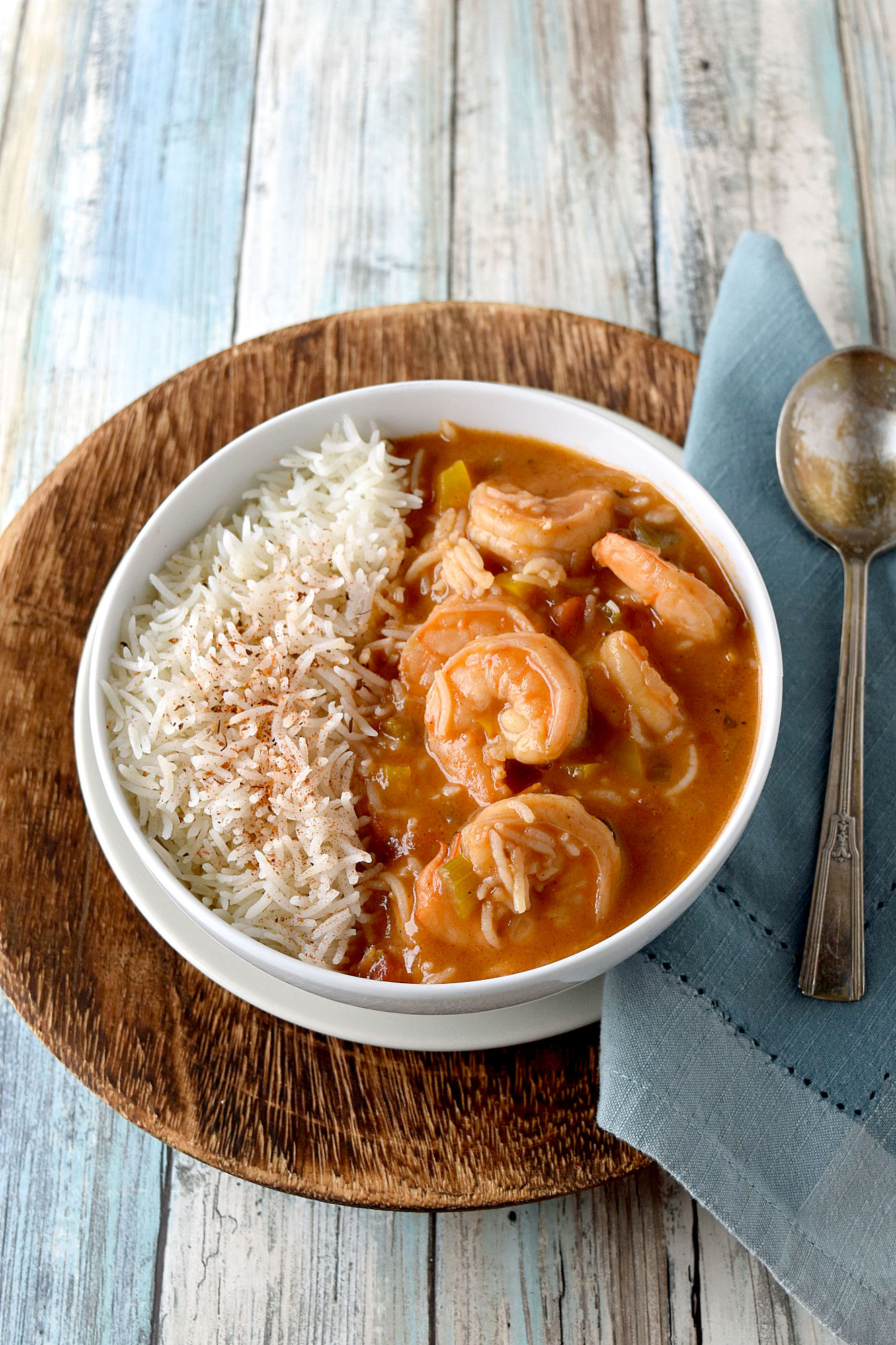
How do you make shrimp étouffée from scratch?
You don’t have to make the shrimp broth. I figured since I had the shells from the shrimp I would make a shrimp broth. It would add another level is shrimp flavor to this shrimp étouffée. I put the shells with some celery tops, coarsely chopped carrots, half an onion with the peel, some garlic, and bay leaves. It smelled so delicious simmering! When I felt it was reduced enough I strained it.
Like I said, the hardest part is the roux. You have to stir it constantly, or almost constantly depending on the heat. You don’t want that thing to burn because then you’d have to start all over again. Which would suck. Mine was a nice caramel color and took about 10 to 15 minutes on a true medium heat. I put that knob right in the middle. I stirred it constantly at first, but let it sit for 30 seconds at a time after it started to turn color.
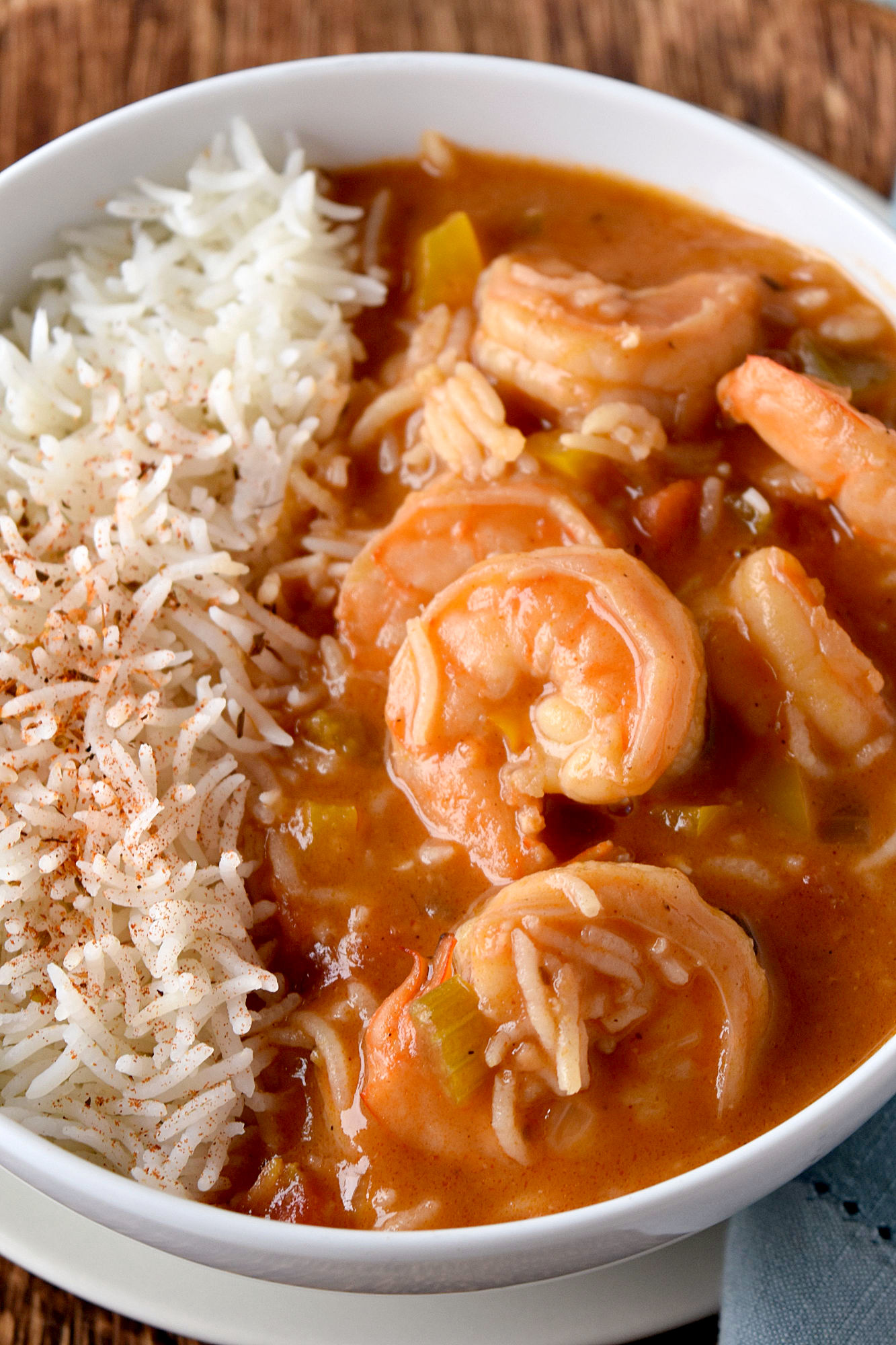
Once the roux is ready, it’s pretty quick and easy.
You stir in the vegetables and garlic. I used a holy trinity which is a take in mirepoix. Mirepoix is 2 parts onion to one part celery and carrot. Holy Trinity is one part onion, one part celery, and one part bell pepper. I used an orange bell pepper in mine because I like their mild flavor. Besides, I like the visual affects of it in this shrimp étouffée.
I sautéed the vegetables for a few minutes until they started to give off their delicious aroma. That’s when I stirred in the Cajun seasoning. I used the spice mix recipe Dad brought back from New Orleans. Maybe I’ll make some and share that. We’ll see. It’s sort of family secret recipe but I’m sure it’s not somewhere on the internet. Or some version of it.
I let that sauté for a minute or two before stirring in the shrimp broth. Then, I let it simmer for at least an hour. It was probably more like 2 to 3. I really wanted all those flavors to simmer and concentrate before adding the shrimp. Since the shrimp take such a short time to cook I added them about 15 minutes before serving. I wanted them cooked perfectly or at least not thoroughly over cooked. It deters from all the efforts of making this dish if you destroy the shrimp.

The broth is like velvet. I’m not kidding. It is smooth and richly delicious without being too stew like. The holy trinity and shrimp broth combine making for a totally flavor packed spoonful. I did not make this shrimp étouffée spicy. You can if you want. It had a kick, but not so much cayenne that you couldn’t taste anything. Sometimes heat isn’t necessary to get the point across and that is the case here.
I served ours with rice. You could serve you shrimp étouffée with grits or pasta. You could also make shrimp and crawfish étouffée, shrimp and crab étouffée, shrimp and sausage étouffée. I think you get the picture. Follow the Cajun style and make what you have on hand!

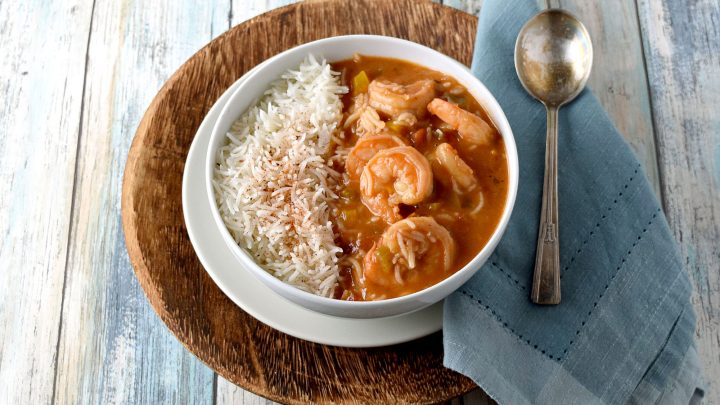
Shrimp Étouffée
Shrimp Étouffée takes just a little effort but is will worth it! The reward shrimp is a smooth and creamy broth and that thick and rich.
Ingredients
For the shrimp stock
- shells from the shrimp
- 1 cup onion
- 1 cup bell pepper
- 1 cup celery
- 1 tablespoon minced garlic
- 4 bay leaves
- 6 cups water
For the étouffée
- 5 tablespoons butter
- 5 tablespoons flour
- 1 1/2 cups diced onion
- 1 cup diced bell pepper
- 1 cup diced celery
- 3 tablespoons minced garlic
- 3 cups stock (fresh shrimp stock is best)
- 3 tablespoons Cajun seasoning
- 14 ounces diced tomatoes
- 1 teaspoon paprika
- 2 pounds shrimp
Instructions
- Combine the ingredients in a medium saucepan over medium heat.
- Simmer for 1 to 2 hours.
- Strain and set aside.
- Combine the butter and flour in a Dutch oven.
- Stir constantly until the mixture is a caramel color; approximately 15 to 20 minutes.
- Add the vegetables and stir until combined.
- Pour 3 cups of the shrimp stock into the pot along with the Cajun seasoning, diced tomatoes and paprika.
- Bring to a boil and simmer 1 hour.
- Stir in the shrimp and cook an additional 30 to 40 minutes or until the shrimp are cooked through.
- Serve over rice.
To make the shrimp stock:
To make the étouffée:
Nutrition Information
Yield
6Serving Size
1Amount Per Serving Calories 445Total Fat 15gSaturated Fat 7gTrans Fat 0gUnsaturated Fat 6gCholesterol 350mgSodium 3430mgCarbohydrates 36gFiber 5gSugar 10gProtein 43g

Laissez les Bon Temps Rouler!
- Dirty Rice by That Recipe
- King Cake Spritz Cookies by Karen’s Kitchen Stories
- New Orleans Fried Oyster Salad by Art of Natural Living
- New Orleans Style Remoulade Sauce by Hezzi-D’s Books and Cooks
- Shrimp Étouffée by A Kitchen Hoor’s Adventures
- Vegan Jambalaya by Magical Ingredients
We share Recipes From Our Dinner Table! Join our group and share your recipes, too! While you’re at it, join our Pinterest board, too!

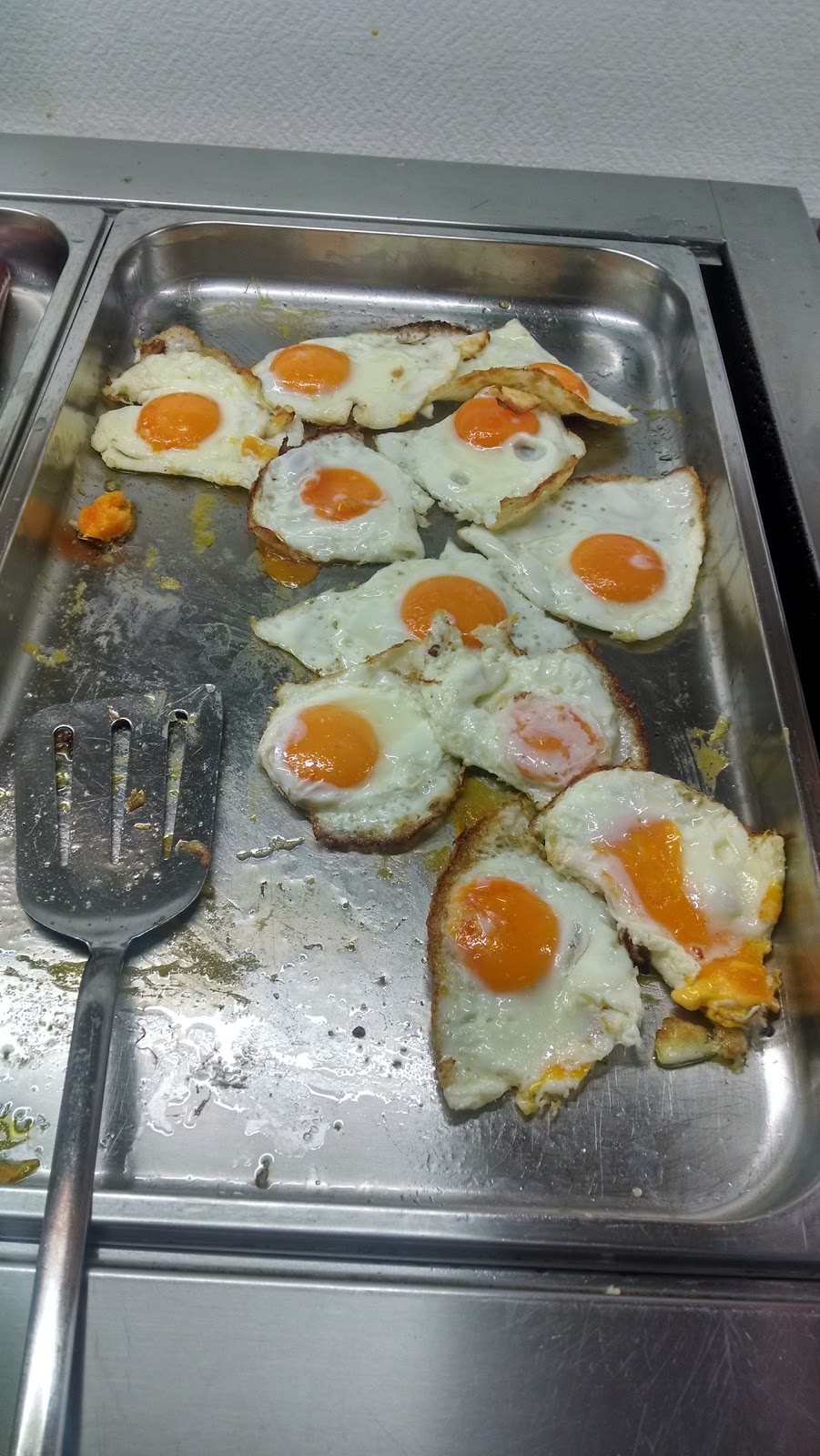


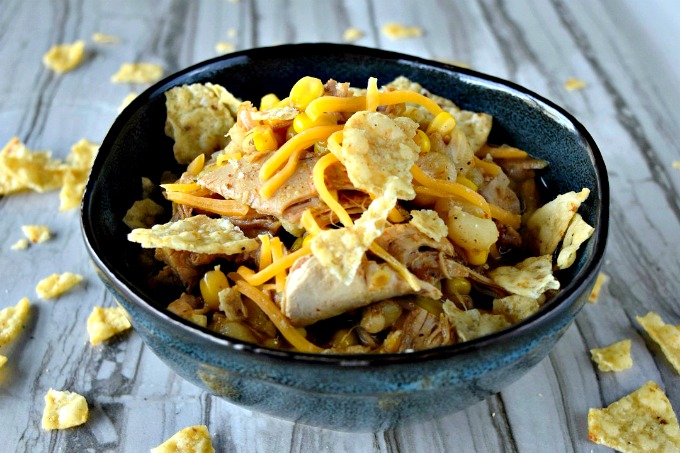
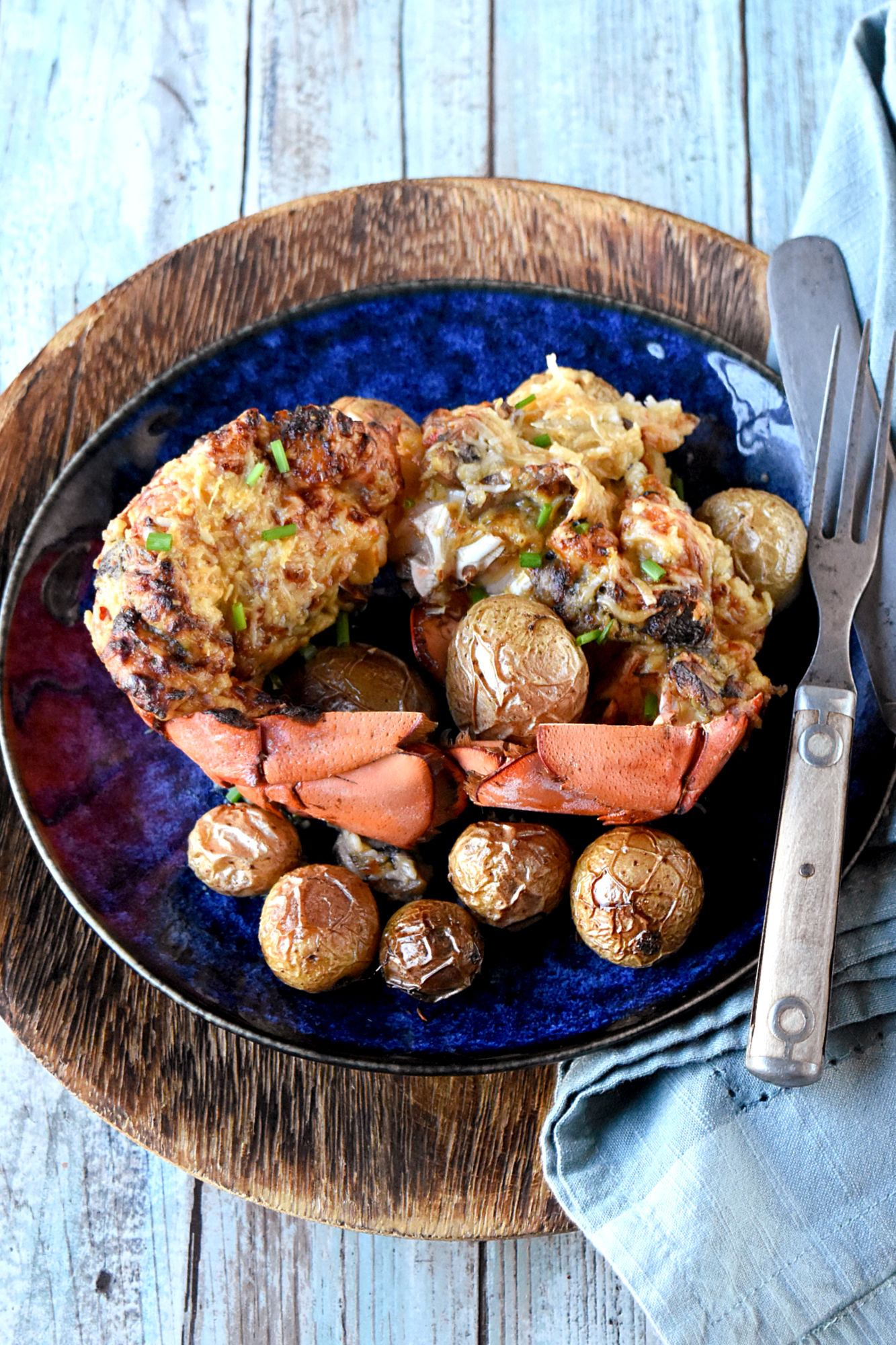

How fun to grow up eating this great food! This looks so amazing. It’s going high on my “must make” list!
I hope you do! It’s worth the effort. So rich and delicious.
I love the very first sentence of your post. “We were foodies before the word foodie was even invented.”- This is kind of echo :-)) Love the recipe as well as the way you served with rice. Also, enjoyed the background history too! I passed this to my friend who makes a similar curry often.
We always watched the latest shows and tried the latest trends. I am lucky to have parents who could cook and bake! I hope they like it!
Thanks for the great history lesson! I love food origin stories. Your shrimp looks amazing too.
Thanks! I like to give history of food so we all know where it came from and how it evolved.
This sounds like there is so much flavor in this dish! My husband would be happy to have me make it for him!
Thank you! I devoured it. The flavor was so good. I know the hubs would enjoy it, too! Mine did.